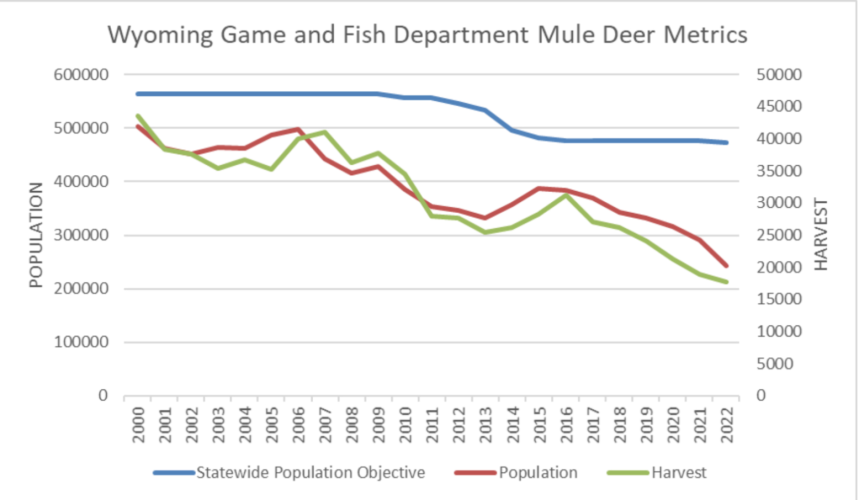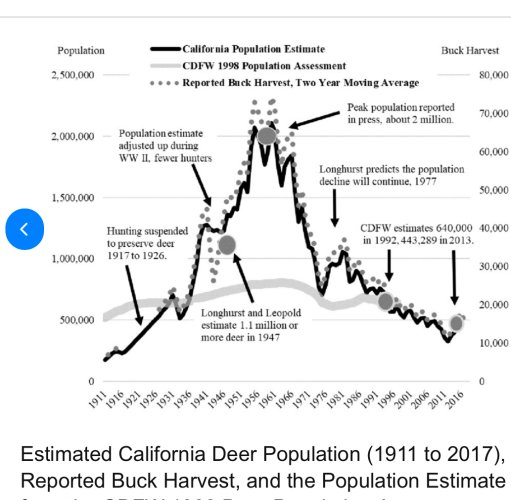WyoFile Link
The neighboring Upper Powder River mule deer herd (different from the Powder River Herd in Sawyer’s study) experienced an even more dramatic change. There, biologists were tallying just 26% of the 18,000-animal goal. The commission slashed the objective in half, so now the herd’s roughly half the targeted size.
Not a single outfitter nor any member of the public formally weighed in. The Wyoming Game and Fish Commission received no written comments, and only Brimeyer stood at the mic during the November meeting.
“Given the status of mule deer in Wyoming and the changes we’re seeing in places like Powder River, it’s kind of surprising that people didn’t provide a little bit more opinion,” Brimeyer told WyoFile.
The neighboring Upper Powder River mule deer herd (different from the Powder River Herd in Sawyer’s study) experienced an even more dramatic change. There, biologists were tallying just 26% of the 18,000-animal goal. The commission slashed the objective in half, so now the herd’s roughly half the targeted size.
Not a single outfitter nor any member of the public formally weighed in. The Wyoming Game and Fish Commission received no written comments, and only Brimeyer stood at the mic during the November meeting.
“Given the status of mule deer in Wyoming and the changes we’re seeing in places like Powder River, it’s kind of surprising that people didn’t provide a little bit more opinion,” Brimeyer told WyoFile.






